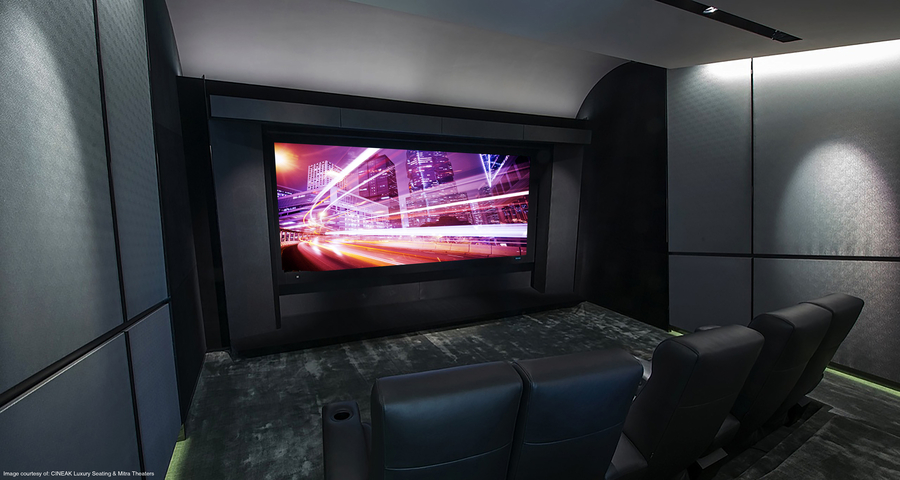5 Deadly Sins That Make Home Theater Designers Cringe
Here’s How to Avoid Them

A home theater is a sizable investment for most people. It may serve as a refuge and escape from the world, a family entertainment space, and even an immersive educational experience (Our Planet, anyone?) However, the home theater experience can be marred by little mistakes in the design and execution of the space.
Home theaters are often a crowning touch in a luxury home. The last thing you want is niggling issues that make your entertainment experience something less than wonderful. To make sure you avoid these issues, we’ve rounded up five mistakes that make our home theater designers cringe. Fortunately, when you work with GHT Group, you can take advantage of our three decades in home theaters (it’s the HT in our name) to make sure your theater doesn’t fall into these traps! Stay with us below.
SEE ALSO: 4 Considerations for Seating in Home Theater Designs
The Wrong Screen or Size
Big screens are part of the theater experience. But choosing one that is too large can be a problem. There’s a reason most people avoid the front rows in a commercial movie theater. You can get dizzy watching fast action and uncomfortable from your neck position. Not paying attention to the relationship between seating distance and screen size is a theater sin.
While we’re on screens, the type of screen will matter too. If your room has windows and may be used in something other than full dark mode – like for sports – you will want a screen that’s a good match for your projector. In theaters with some ambient light, you will want a light rejecting or absorbing screen. The last thing you want is a screen with washed-out colors and detail.
Uneven Visibility
Who hasn't been to a commercial theater where a taller person in front of you blocked your view? Unless your theater has only one row of seats, you want to ensure that all seats get a great view. This might entail using risers or tiered seating in your theater. The other trick to getting this right is the screen size and height – it’s all highly related to the seating design.
Not Spending Enough on the Audio
Home theaters are equal parts visual and aural experiences. If you invested in the immersive screen, you want immersive audio to go with it. In our home theater designers' educated opinions, not going with Dolby Atmos immersive audio is a mistake. You want your experience to be all it can be, so make sure the audio fits your screen and space. You’ll understand dialog better, be enveloped by sound like you’re in the scene, and be transported into the story.
Using the Wrong Décor
This one has nothing to do with the technology in the theater but can affect your experience. You will want to avoid reflections from surfaces in your theater, which means paying careful attention to furnishings, finishes, and colors. Whether it’s a cabinet, seat material, wall finish, or light fixture, you want to choose décor that doesn’t reflect light. Remember those niggling things we mentioned that could mar the experience? This is one of them!
Got Power?
You might be surprised at how this sometimes gets missed. Home theater equipment uses a lot of juice, especially when the amplifier is keeping up with loud scenes where all the channels are pumping immersive surround sound. Then there’s the projector, source equipment, and other electronics. Ensuring you have enough amps to not trip a breaker is essential to the experience. Good power conditioning is also key in properly equipped home theaters to provide stable current.
As we alluded to earlier, the easiest way to avoid these sins is by working with an experienced home theater designer. For over thirty years, GHT Group has been building home cinemas for luxury homes in metro Atlanta. Contact us here, or click the chat box below to quickly connect with one of our home theater experts. We look forward to working with you!